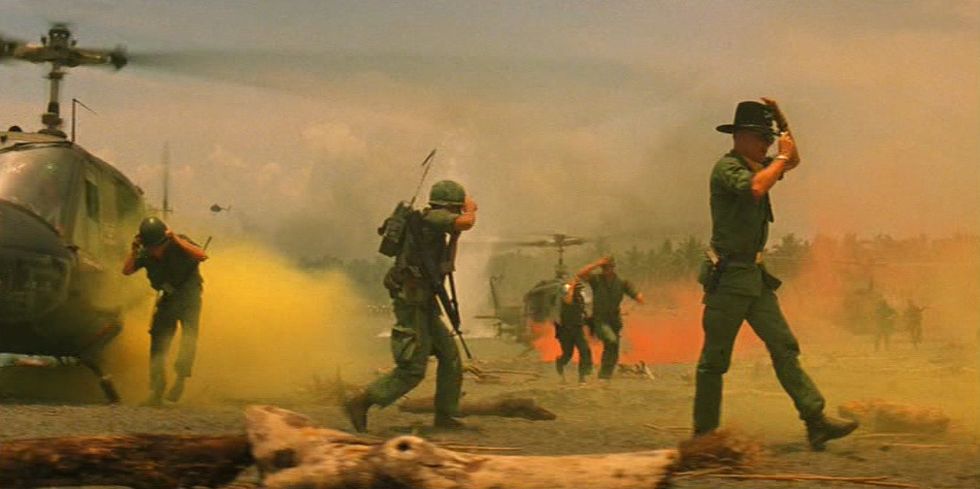"Apocalypse Now" is Francis Ford Coppola's masterpiece meant to serve as an adaptation of the novel "Heart of Darkness." The filmmakers set out to craft a dark, gritty war epic, revolving around one character's descent into madness, and just how close the protagonist will come to that very madness in order reach his goal. Screenwriter John Milius crafts a decadent, gloomy look at the Vietnam War in its later years, giving audiences a glimpse at the insanity and inner wrath of darkness that every man who fought in the war inevitably encountered. This novella adaptation succeeded in ways no one could have predicted; bringing a story to the big screen that marked a new era in cinema through ground-breaking aesthetic storytelling.
The film is grounded in the psychedelic aura of the late '60s and early '70s, adopting a green, yellowish color tone throughout nearly all of its entirety. The hue plays a rather part in making audiences feel the melancholy, and utter psychological madness which is a running theme throughout the story. It also forces us to work slightly harder to interpret what is happening in each scene, as the low-key lighting presents a dark, visual look seen mostly in film noir.
Moving on, the sound of the film is absolutely superb, with the atmospheric hum of helicopter propellers being added to Carmine Coppola's rapturing thematic score to deliver jaw-dropping soundscapes which work to pull the viewer into what is going on inside Willard's head. Furthermore, the songs that the team behind "Apocalypse Now" chose to accompany many of the scenes, further round out the psyche-filled pacing of the story, and in turn almost makes the film feel like "a bad acid trip," according to lead sound designer Walter Murch. "The End" by The Doors is a perfect song to begin the film, with the shot of the napalm fires spreading across the two treelines while at the same time blending with Jim Morrison's dark prose in a way that foreshadows the barbarity and ruthlessness that the U.S. army will demonstrate throughout the latter parts of the film.
Other moments, like the scene that has Lance skiing on the river while "I Can't Get No Satisfaction" plays, lends a hand to audiences, making them feel more at ease while loosening the tension before the many heavy-hitting dark subject matter begins to overcome the plot throughout the rest of the movie. But overall, each visual and auditory manipulation brings the viewer closer to what the main character is thinking, and formulates a unique tone for the viewer.
I consider "Apocalypse Now" to be a masterpiece in film, which is why it is difficult for me to choose only two of my favorite aesthetic manipulations. However, if I had to narrow it down, I would simply choose the very first scene of the film, with Willard in his hotel room, and the final scene, where Willard assassinates Colonel Kurtz. In the first, I love how the "The End" plays alongside the napalm-struck treeline, as well as the way those images fade in and out as we see an extreme closeup of Captain Willard's eye as he slowly blinks. Moreover, as the song builds up in its intensity, so too does Willard's claustrophobia and insanity in the scene, which is something I particularly loved.
Finally, in the last scene of the film, I adored the hard cuts between Willard killing Kurtz, and the natives chopping off the head of the bull. The scene just plays out beautifully, with the low-key chiaroscuro lighting showing off Willard's blade and nothing else, while showing the bull being killed to visually represent Kurtz's death to the audience. In conclusion, Apocalypse Now is a triumph of sight, sound, and motion, and should be looked at as one of the ultimate blends of these three filmmaking elements in order to cinematically and literally challenge the audience to intensify, clarify, and interpret.
Score: 10/10
















